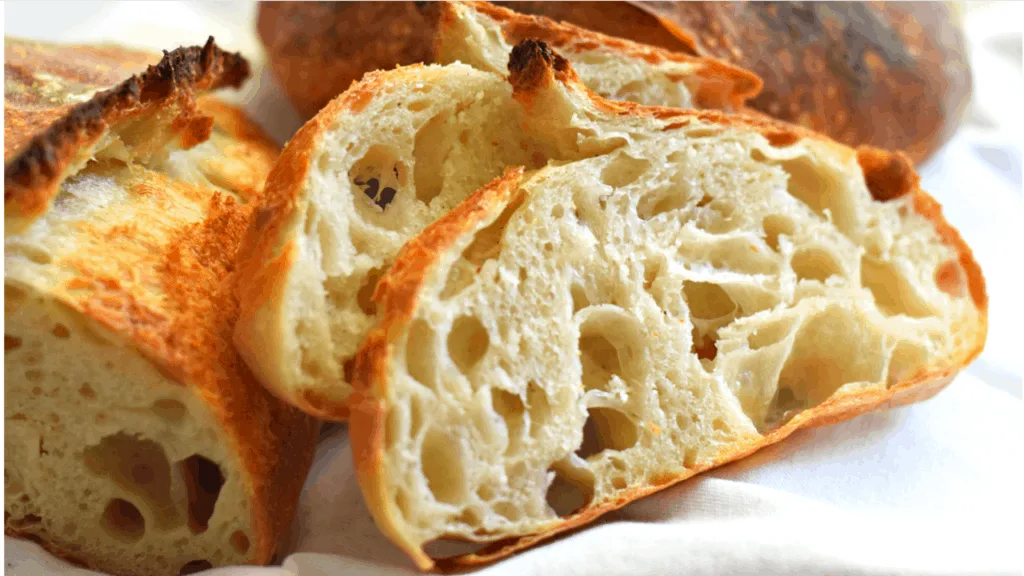Using Steam for Crusty Artisan Bread: Expert Tips and Techniques

Achieving a perfect, crusty artisan bread with a golden, crackly exterior and soft, airy interior is a baker’s dream. At Delights Bakery, we’re passionate about sharing baking tips to help you master bread baking. One key technique for that coveted crust is using steam in your oven. This guide will walk you through why steam is essential, how to create it at home, and expert tips to perfect your crusty bread. Whether you’re baking sourdough or a rustic boule, let’s explore steam baking techniques to elevate your artisan bread!
Why Steam Is Important for Artisan Bread?
Steam plays a critical role in creating the signature crust of artisan bread:
- Delays Crust Formation: Keeps the dough surface moist, allowing it to expand fully during the oven spring.
- Promotes Crispiness: Creates a glossy, crackly crust as the moisture sets.
- Enhances Color: Encourages caramelization for a golden-brown finish.
- Improves Texture: Results in a thin, crispy crust with a soft interior.
- Mimics Professional Ovens: Replicates the steam-injected environment of commercial bakeries.
Tools for Creating Steam
You don’t need a professional oven to use steam effectively. Here are the essential tools:
- Dutch Oven or Cast Iron Combo Cooker: Traps natural steam from the dough for excellent results.
- Baking Stone or Steel: Ensures even heat distribution; pair with a steam method.
- Metal Pan or Tray: For adding water or ice cubes to create steam in the oven.
- Spray Bottle: For misting water into the oven or onto the dough.
- Lava Rocks (Optional): Place in a metal pan to hold water and release steam gradually.
- Oven-Safe Bowl: For covering smaller loaves to trap steam.
Methods to Create Steam in Your Oven
Here are three effective methods to introduce steam for crusty bread:
1. Dutch Oven Method (Best for Home Bakers)
- Preheat a Dutch oven with its lid at 450°F (230°C) for 45 minutes.
- Place shaped dough on parchment and lower into the hot Dutch oven.
- Cover and bake for 20-25 minutes to trap steam, then remove the lid for the final 15-20 minutes.
- The trapped steam creates a perfect crust without additional tools.
2. Pan and Water/Ice Cube Method
- Place a metal pan on the bottom oven rack during preheating (450°F/230°C).
- Place dough on a preheated baking stone or steel.
- Pour 1 cup of hot water or add ice cubes to the hot pan right after loading the dough, then quickly close the oven door.
- Bake for 35-45 minutes, removing the pan after 10-15 minutes to let the crust crisp.
3. Spray Bottle Method
- Preheat oven with a baking stone or steel to 450°F (230°C).
- Place dough in the oven and quickly mist the dough or oven walls with water from a spray bottle (avoid glass door).
- Repeat misting 2-3 times in the first 5 minutes of baking.
- Bake for 35-45 minutes until crust is golden and crisp.
Tips for Perfect Steam Baking
Achieve bakery-quality results with these baking techniques:
- Preheat Thoroughly: Ensure the oven and tools (Dutch oven, stone, or pan) are fully preheated for consistent heat.
- Use High Heat: Bake at 425-475°F (220-245°C) to maximize oven spring and crust development.
- Score Dough: Deep slashes allow steam to escape and enhance crust expansion.
- Limit Steam Time: Apply steam for the first 10-15 minutes only; excess steam can soften the crust.
- Check Oven Seal: Ensure the oven door closes tightly to trap steam effectively.
- Test Doneness: Bread should sound hollow when tapped and reach an internal temperature of 190-200°F (88-93°C).
Common Mistakes to Avoid
- Using Too Much Steam: Excessive steam can lead to a soggy or tough crust; limit to the first 10-15 minutes.
- Opening Oven Door Frequently: This releases steam and heat, reducing oven spring.
- Skipping Preheating: A cold oven or pan won’t create enough steam or heat for a good crust.
- Using Glass Pans for Steam: Glass can shatter with rapid temperature changes; use metal.
- Ignoring Dough Hydration: High-hydration doughs (65-75%) work best for crusty artisan bread.
Best Bread Types for Steam Baking
Steam enhances the crust of these breads:
- Sourdough: Achieves a thick, chewy crust with a tangy interior.
- Baguettes: Creates a crisp, golden exterior with a soft, airy crumb.
- Ciabatta: Enhances the open crumb and crunchy crust of high-hydration doughs.
- Rustic Boules: Perfect for a crackly, artisanal finish.
Troubleshooting Steam Issues
- Pale Crust: Insufficient steam or low oven temperature; increase steam and preheat longer.
- Soft Crust: Too much steam or not enough baking time after steam; remove steam source after 15 minutes.
- Uneven Crust: Uneven steam distribution; ensure even misting or use a Dutch oven.
- Dense Bread: Likely under-proofed dough or insufficient oven spring; check dough hydration and proofing time.
Frequently Asked Questions
Can I Use Steam in Any Oven?
Yes, any home oven works with the right tools (e.g., Dutch oven, water pan).
Is a Dutch Oven Necessary?
No, but it’s the easiest way to trap steam; alternatives like water pans work well.
Can I Use Ice Cubes Instead of Water?
Yes, ice cubes create gradual steam; add to a hot metal pan for best results.
Why Is My Crust Not Crispy?
Insufficient steam, low heat, or too-long steam exposure; adjust timing and temperature.
Explore Our Baking Tips & Techniques!Final Thoughts
Using steam is a game-changer for baking crusty artisan bread, bringing bakery-quality results to your home kitchen. At Delights Bakery, we’re dedicated to sharing baking techniques that elevate your skills. Try these steam baking methods, share your crusty bread creations in the comments below, and let us know your favorite artisan bread recipes for a chance to feature them!

Comments
Post a Comment